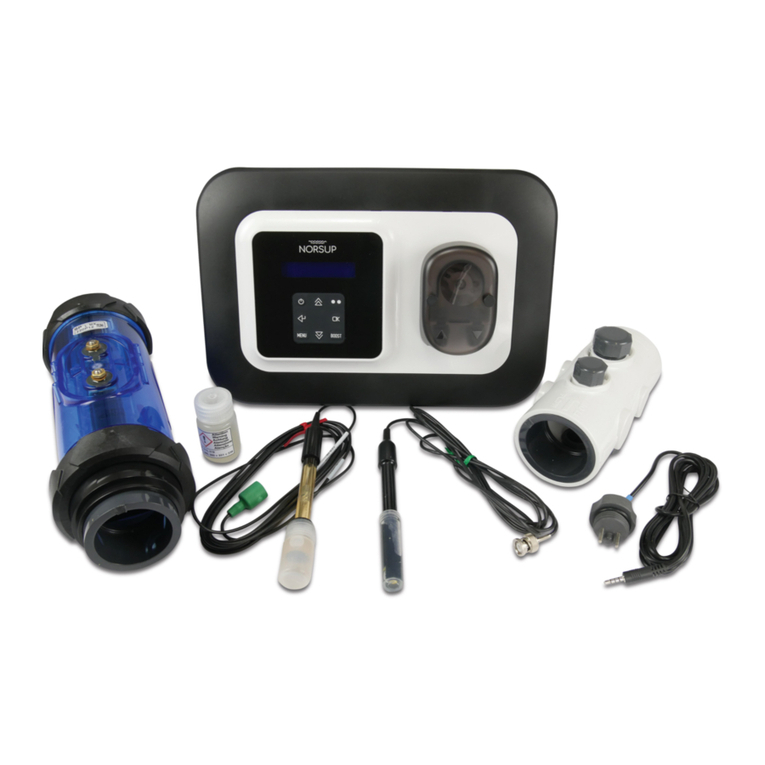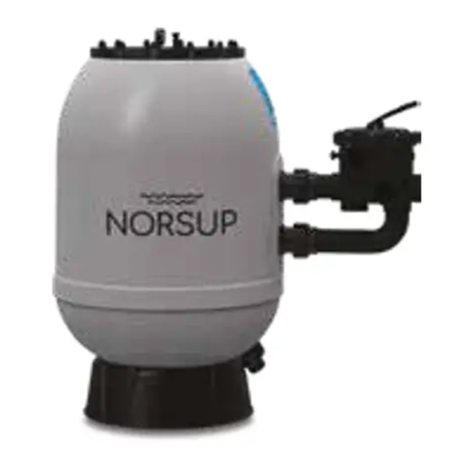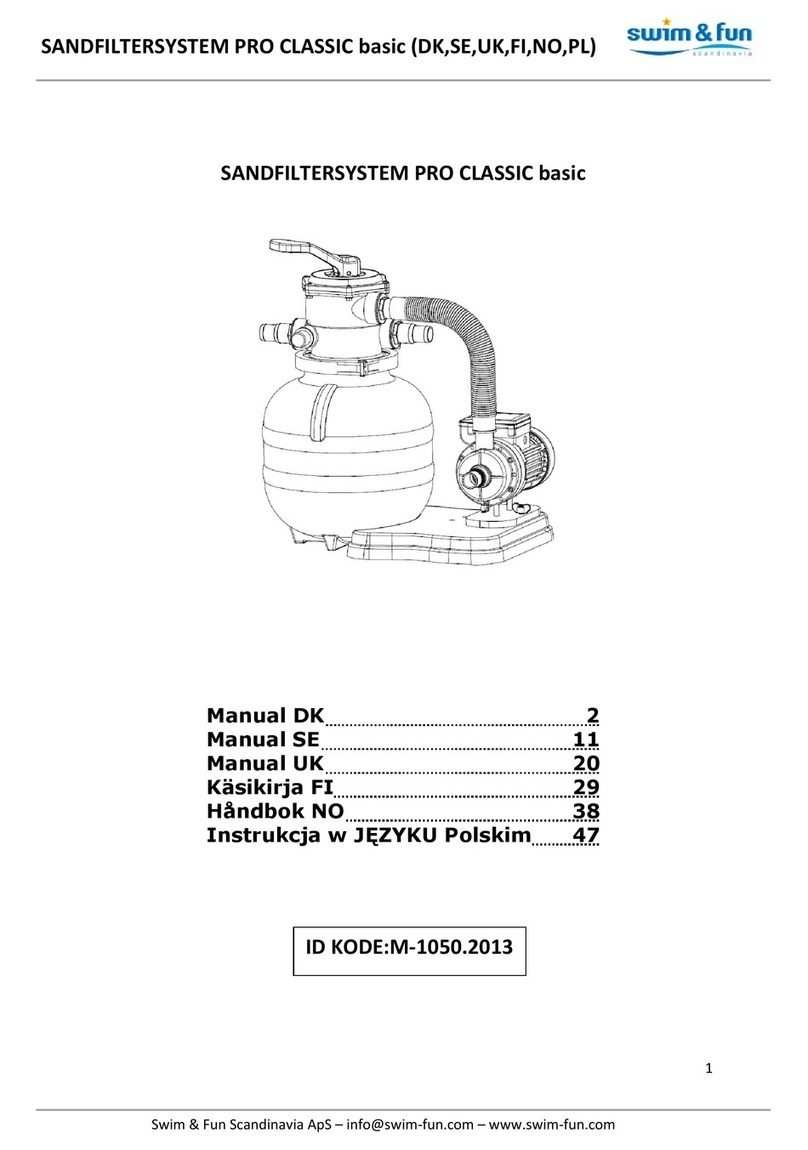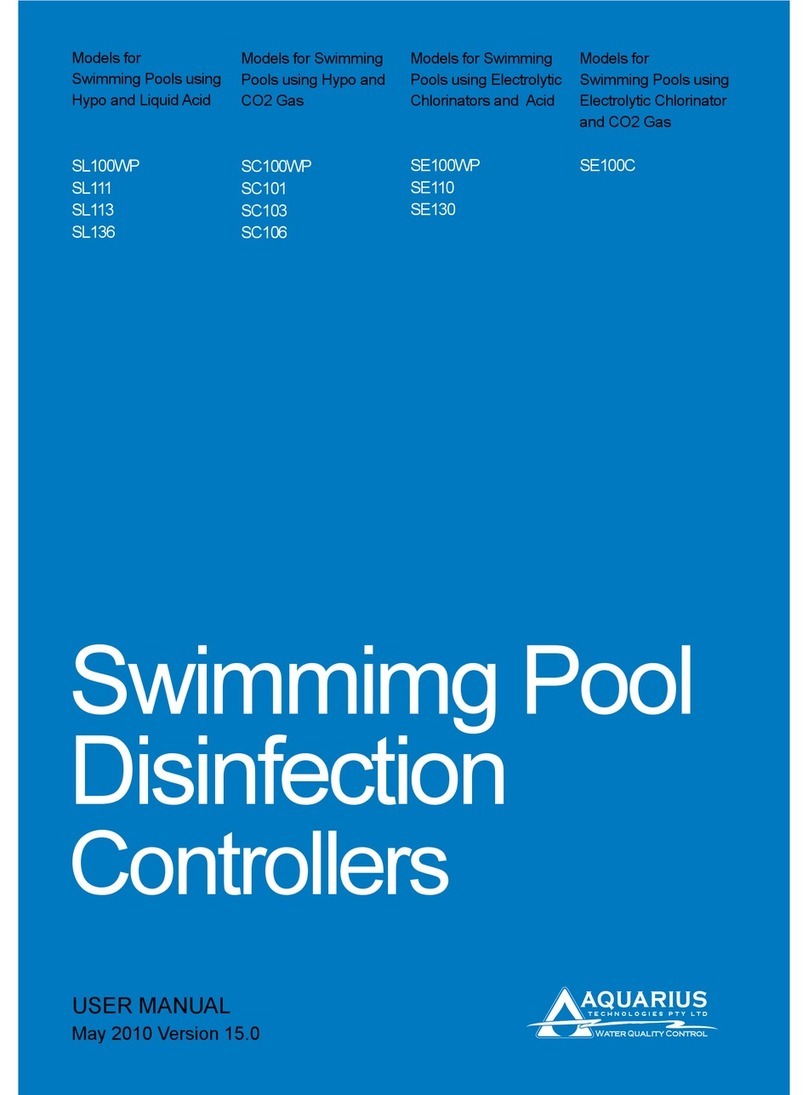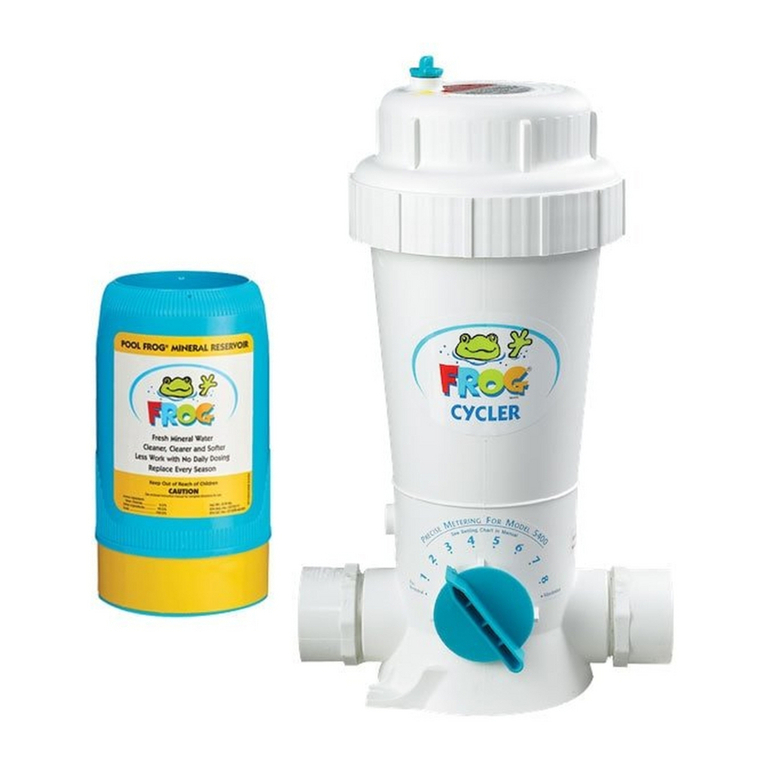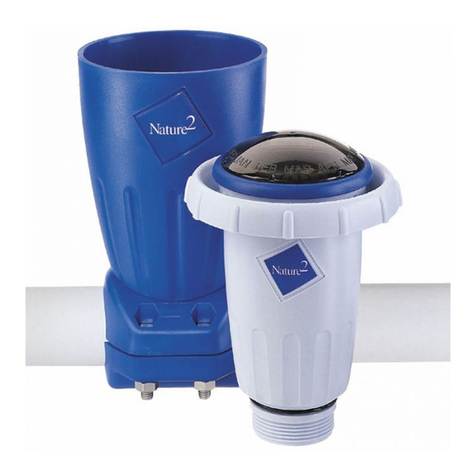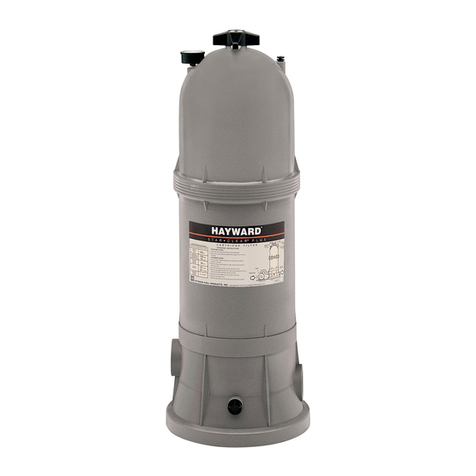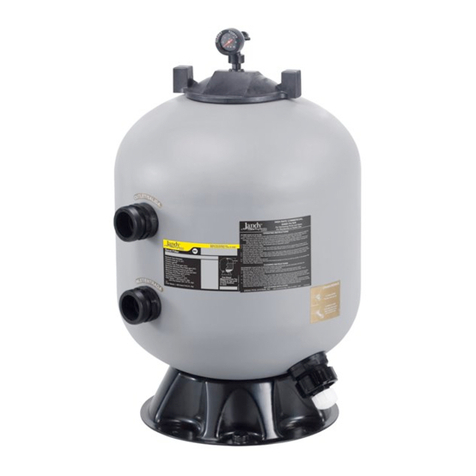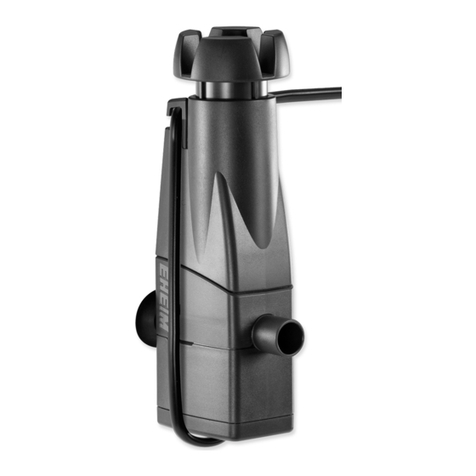Norsup S Series Operation instructions

POOL FILTER SYSTEM
TYPE S, TYPE T SERIES
ORIGINAL MANUAL
SCHWIMMBAD FILTERANLAGE
TYP S, TYP T SERIE
ORIGINALBETRIEBSANLEITUNG
SYSTÈME DE FILTRE DE PISCINE
TYPE S, TYPE T SÉRIE
NOTICE ORIGINALE

3
Alterations which serve the technological progress as well as errors excepted! ORIGINAL MANUAL NORSUP
DE
FR
EN
POOL FILTER SYSTEM - TYPE S, TYPE T SERIES
Errors and technical modifications subject
to change, reproduction as well as electronic
duplication only with our written permission.
© NORSUP Pumps
Edition: 11.2020
1 GENERAL PREFACTION 4
1.1 Identification manufacturer’s data 4
2 GLOSSARY OF THE USED TERMS 4
3 RULES OF REFERENCE 4
4 EQUIPMENT DESCRIPTION 4
4.1 Particulars and function 4
4.2 Equipment’s overall view 4
4.3 Structural data and technical characteristics 5
4.4 Equipment’s technical characteristics 5
5 RISKS CONNECTED TO THE EQUIPMENT 5
5.1 Universality 5
5.2 Connected risks 5
5.3 Risks for an incorrect use 5
5.4 Residual risks 5
6 SIGNS STICKED ON THE EQUIPMENT 6
7 TRANSPORT AND INTERNAL MOVING 6
8 INSTALLATION 6
8.1 Normal working 6
8.2 Storage 6
8.3 Starting 6
8.4 Refilling 6
8.5 Filter closing 7
8.6 Starting 7
8.7 Working 7
8.8 Filtration 7
8.9 Backwash 7
8.10 Rinsing 7
8.11 Waste 7
8.12 Circulation 7
8.13 Lock 8
8.14 Winter 8
9 ORDINARY AND PREVENTIVE MAINTENANCE 8
9.1 Universality 8
9.2 Ordinary maintenance 8
10 DRAINING 8
11 PROHIBITIONS 8
12 MAINTENANCE OPERATION BOOK 9
CONTENTS:
EN
FR
DE
Google Play Store Apple Appstore
DOWNLOAD NORSUPONE APP: www.norsup.eu
COMPONENTS CARD 22 23
POOL FILTER SYSTEM
TYPE S, TYPE T SERIES
ORIGINAL MANUAL
SCHWIMMBAD FILTERANLAGE
TYP S, TYP T SERIE
ORIGINALBETRIEBSANLEITUNG
SYSTÈME DE FILTRE DE PISCINE
TYPE S, TYPE T SÉRIE
NOTICE ORIGINALE
4
20
12

45
Alterations which serve the technological progress as well as errors excepted! ORIGINAL MANUAL NORSUPWWW.NORSUP.EU Alterations which serve the technological progress as well as errors excepted!
DE
FR
EN
POOL FILTER SYSTEM - TYPE S, TYPE T SERIESPOOL FILTER SYSTEM - TYPE S, TYPE T SERIES
4.3 STRUCTURAL DATA AND
TECHNICAL CHARACTERISTICS
The main indications concerning the equipment’s
characteristics are given hereafter.
4.4 EQUIPMENT’S TECHNICAL CHARACTERISTICS
The dimensions, the bulkheads, the connection dimensions
and the weights of the different filters are reported on
the component cards enclosed at the end of this
handbook (page 22-23)
Filters should operate only with:
- aqueduct or ground water
- seawater;
- water mixed with sodium hypochlorite in
compliance with the UNI 901:2002 rule in
a solution of max 0,2 mg/l ( 2 ppm).
The equipment can be submitted to the working
pressure of:
1,5 bar (6-10-14-22 m3/h) 2,5 bar (35 m3/h)
The fluid temperature used by the equipment should
be included in the following range:
Tmin: +5°C Tmax: +40°C
5 RISKS CONNECTED TO THE EQUIPMENT
5.1 UNIVERSALITY
For its own conformation, for its structural
prerogatives and for the work that should be
accomplish, the equipment shows some not
eliminable risks hereafter described.
5.2 CONNECTED RISKS
5.3 RISKS FOR AN INCORRECT USE
In addition to the risks presciently underlined, it is possible
to suppose that, although it has been indicated more
than once how to behave properly to limit the risks, there
could be situations of anomalous behaviour (incorrect use).
The risks caused by an incorrect use and their
prevention are summarized in the following table.
5.4 RESIDUAL RISKS
In this way, with the application of what mentioned
and arranged, we have prepared a remedy for all kind
of not eliminable risks, consequently, there should be
no damages. Anyway, the operator should check the
absence of people in the risk zone before doing any
operation.
The operator should take precautions by wearing the
necessaries individual protection means (gloves, glass,
anti-noise devices, accident prevention shoes).
1 GENERAL PREFACTION
This user and maintenance handbook is a document
issued by NORSUP. It is to be considered an integrated
part of the product for its lifetime, even in case of cession
to a third party, until its demolition and draining.
All rights of reproduction and spreading of this
handbook and of the enclosed documentation,
are reserved to NORSUP
The products described in this handbook are patented.
Every reproduction, even if it is partial, is forbidden.
The aim of this handbook emitted by NORSUP is to:
• supply operators and maintenance men with all
the instructions and warnings necessaries to
work safely ;
• allow the user to use the equipment in a safe
and proper way and to maintain the goods in a
state of good efficiency and security;
1.1 IDENTIFICATION MANUFACTURER’S DATA
Declares to be the manufacturer and reference of
the equipment for eventual operations of technical
maintenance assistance and/or changing of the
equipment described in this handbook.
• If the explanations reported here are considered
not clear or incomplete and if one or more parts
of the handbook are not perfectly comprehensible,
it is necessary to address to the manufacturer so
as to obtain all the necessary additional indications
and/or information.
• The manufacturer engages himself, if necessary,
to supply a new handbook enriched with the
agreed clarifications.
• In order to obtain the best performance from the
products, it is recommended to follow carefully
the instructions kept in this handbook, which
should be read carefully in every single part.
• The indications concerning the use of the
equipment should be executed in an absolute
and precise way according to what is specified
hereafter. In this way the inconveniences caused
by non observance of the rules can be avoided.
This handbook is technical, so it is an exclusive
property of NORSUP whom reserves all rights;
every reproduction of this handbook, even if in
part or partial, is forbidden by the law.
2 GLOSSARY OF THE USED TERMS
We refer to the table enclosed for what concerns the
general definitions of the single equipment’s components.
It is defined INCORRECT USE the use of the equipment
outside the limits specified by this handbook.
Only qualified and authorized staff, competent technicians
and installers, are allowed to carry out the following
activities:
• installation and start up;
• removal and demolition;
• regulation & setting
• maintenance and repair;
3 RULES OF REFERENCE
A classification of the pressure equipment has been
executed according to the 97/23/CE PED directive since
it has been submitted to a pressure higher than 0,5 bar.
4 EQUIPMENT DESCRIPTION
4.1 PARTICULARS AND FUNCTION
This equipment is used for the water treatment of the
pool for human bathing. The aim is to guarantee the
filtration and to keep suspended matter not withheld
by the traditional filter baskets installed up stream of
the system.
The NORSUP sand filter has been manufactured to
hold materials and suspended matter of 0,4 mm and
0,8 mm in size.
The principle of function is that of trapping
suspended matter by making the treated water flow
through the filtering material situated inside the filter.
4.2 EQUIPMENT’S OVERALL VIEW
ATTENTION
It is not allowed to use the equipment in different
configurations from what is reported within or
different working installations from what is
established and advised by the manufacturer .
Different, improper, and/or a non correct use
regarding the mentioned instructions of installation
and use present in this handbook make all the
manufacturer’s responsibility no longer valid.
ATTENTION
Before the installation check that the inlet system,
connected to the filter, is provided with suitable devices
which limit and prevent the overflow of the maximum
pressure inside the filtration system (4 bar).
ATTENTION
If it is provided that if the fluid temperature can go
below the freezing point, isolate the equipment from
the inlet system connected to it and empty it, according
to the conditions specified in the maintenance section.
Refer-
ence
Risk Sign Danger
location
Remedy
1Fluids’
project-
ion
Zone
surrounding
the equipment
sign
Incorrect use Risk Prevention
Incorrect
insertion of the
filtering
material
Malfunction,
saturation of the
filtering mass,
gas formation
Information on
the handbook
Not suitable
treatment with
fluid
Malfunction,
saturation of the
filtering mass,
gas formation
Information on
the handbook
Treatment of
a part or all
equipment
with chemicals
Weakening and/
or structure’
slough
Information on
the handbook
Unstable
positioning
Upsetting Information on
the handbook
Lid’s opening
while the
equipment is
pressurized
flooding, parts
projection
Information on
the handbook

67
Alterations which serve the technological progress as well as errors excepted! ORIGINAL MANUAL NORSUPWWW.NORSUP.EU Alterations which serve the technological progress as well as errors excepted!
DE
FR
EN
POOL FILTER SYSTEM - TYPE S, TYPE T SERIESPOOL FILTER SYSTEM - TYPE S, TYPE T SERIES
6 SIGNS STICKED ON THE EQUIPMENT
The following signs are used inside the handbook and
on the machineries :
7 TRANSPORT AND INTERNAL MOVING
The following specifications are to be considered:
It is recommended the use of qualified and specialized
staff to move, transport and install the equipment.
Moving should be executed by lifting the equipment
according to the following specifications:
☞by the edge with open lid;
☞by the base;
For short moving it is possible to use a fork lift
and/or manual trolley.
8 INSTALLATION
8.1 NORMAL WORKING
Connection should be executed by authorized and
qualified staff. Equipment’s connection should be
linked to the pool system circuit. Connection should
be done by using threaded pipes union which are
included in the equipment, the thread and the
diameter are indicated in the components card.
Pipe union exit , included in the equipment, should be
connected by a glued smooth pipe (PVC) During the
normal working, the equipment should be placed in a
covered and dry area protected from the direct sunlight
irradiation and from heat.
For proper working conditions, the water temperature
should range between +5°C and +40°C. The filter has
a flow stream direction – which should be respected
– these are indicated by the arrows situated near
the pipe unions.
8.2 STORAGE
During an eventual storage the equipment should
be kept in a covered and dry place. The equipment
should be protected from eventual water sprinklings,
dust, humidity, collision or accidental damages.
Advisable room temperature should be included
between 0°C and +50°C.
8.3 STARTING
Check carefully that the components aren’t damaged
because of transport collisions . If any part is damaged
or it is not in keeping with the original condition of supply-
ing, don’t make the system work and provide for the
reparation or for the substitution at the assistance centre.
Check that all the filter connection pipes and the valves
are closed.
8.4 REFILLING
Refill the filter by putting in the filtering material from
the hole lid.
The Filter media sand used must have the following
characteristics:
Afterwards fill the sand filter with water.
The refill should be done slowly by letting the water
flow in every interstices inside the filtering material.
Refill should be done until the water level overflows
the filter’s edge.
8.5 FILTER CLOSING
• Close the filter by the lid, the gasket, the clamp, the
screws and the nuts included in the equipment
• Verify that the contact surfaces are clean and
eventually remove the dirt or the residual
filtering material;
• Place the gasket on the filter.
• Assemble the pressure gauge on the lid in the
proper hole (by the threaded hole or by the
proper back nut and O-ring);
• Place the lid
• Put the clamp to close the lid and the filter top
• Place the 2 nuts in the clamp
• Close the clamp using the screws, until the two
side are coincident. Do not over-screw!
8.6 STARTING
Open slowly the valves situated on the connection
pipe. Check that there are no water leaks.
8.7 WORKING
The equipment carries out the filtration of the water
according to what is described in this handbook. For a
good performance of the filter and for a good manage-
ment of the system connected to it, there are further
functions that should be considered and suggested.
By a different set up of the multi-port valve connected
to the filter (when models are included) it is possible
to carry out these other functions.
A 6 way valve has the following main working positions:
1 filtration 4 waste
2 backwash 5 circulation
3 rinsing 6 lock
The operating conditions of each position are described
in detail hereafter.
8.8 FILTRATION
It is the normal position of exercise, it carries out the
filtration of the treated water from the entry to the exit.
8.9 BACKWASH
It is used for cleaning the filter media present in the
filter. This operation removes any suspended matter
caught by the filter media during normal exercise.
8.10 RINSING
it should be done after the backwash in order to
remove eventual impurities inside the valve.
8.11 WASTE
It allows water to flow straight to the waste (ex.
emptying the pool)
8.12 CIRCULATION
It allows the system to operate without the filter.
water is by-passed straight to the exit.
ATTENTION:
Carry out all the operations with caution
AND RISE THE EQUIPMENT BY FOLLOWING
THE INDICATED ZONE
ATTENTION:
It is necessary to follow the instructions reported
in this handbook to rise and to move the equipment.
ATTENTION:
Before refilling close the access hole of the
centre manifold pipe which is placed just under
lid. Remove the gasket from the filter’s entry.
ATTENTION:
In case of water leaks, close immediately the
filter valves and proceed with an examination
of the system.
ATTENTION:
At the end of the refill remove the closure
used for the manifold pipe which is placed
under the lid.
ATTENTION:
Check that the spreading of the water in excess
doesn’t cause damages and that there aren’t any
nearby voltage and/or electric component parts
present were the excess water could be in
contact with.
FILTER MEDIA GRANULOMETRY
0,4 ÷ 0,8 mm
QUARTZ SAND and 1 ÷ 2 mm
MILLED QUARTZ 1 ÷ 3 mm
3 ÷ 6 mm
ZEOLITE 1 ÷ 2,5 mm
2,5 ÷ 5 mm
DIATOMACEOUS -
ANTHRACITE 0,8 ÷ 1,8 mm
ACTIVATED CARBON -
FILTER MODEL MATERIAL QUANTITY
6 m3/h 75 Kg
10 m3/h 100 Kg
14 m3/h 150 Kg
22 m3/h 250 Kg
35 m3/h 550 Kg
ATTENTION:
The selection with the
multiport valve level
should be done ONLY
WHEN THE SYSTEM IS
SWITCHED OFF AND
NOT IN USE!
SYMBOL EXPLANATION
Generic danger
Compulsory to protect
the respiratory tract
Access prohibited to
people not authorized
Compulsory to protect
hands with gloves
Compulsory to consult
the handbook
Compulsory to remove the
electrical connections for
the maintenance

89
Alterations which serve the technological progress as well as errors excepted! ORIGINAL MANUAL NORSUPWWW.NORSUP.EU Alterations which serve the technological progress as well as errors excepted!
DE
FR
EN
POOL FILTER SYSTEM - TYPE S, TYPE T SERIESPOOL FILTER SYSTEM - TYPE S, TYPE T SERIES
8.13 LOCK
It closes every passage of the valve.
8.14 WINTER
It is an intermediate position which, with an empty
system, prevents eventual breakings caused by
freezing.
9 ORDINARY AND PREVENTIVE MAINTENANCE
9.1 UNIVERSALITY
The handling of the following operations is left to
the user. They also can be executed (on request)
by NORSUP.
If the user intends to do the maintenance by himself,
the operations should be entrusted to a qualified person
able to estimate an eventual fault and restore the protect-
ions and the securities. Maintenance operations, search
for faults and repairs are allowed only to qualified staff;
non authorized operations make the warranty void.
9.2 ORDINARY MAINTENANCE
Equipment’s maintenance is based on a sequence
of operations which, if done as indicated hereafter,
allows to keep the equipment in perfect working
efficiency. Maintenance should be done according
to the rules indicated in this handbook.
The indicated control and maintenance slots
are to be considered indicative values for the
exercise in normal conditions, on the base of
general use of 8 hours a day for 365 days a
year. (approx. 3.000 hours/years). Different
conditions can change the maintenance’s slot.
The main operations are summarized hereafter:
10 DRAINING
The material’s waste should be done in accordance to
the governing laws in force in the country where the
equipment has been installed. A waste separation should
be done when a partial or complete draining is executed.
11 PROHIBITIONS
12 MAINTENANCE OPERATION BOOK
All the operations made on the filter should be reported on the enclosed book.
ATTENTION:
During the emptying of the filter, check that the
spreading of the water in excess doesn’t cause
damages and that there aren’t any nearby
voltage and/or electric component parts present
were the excess water could be in contact with.
Installation’s Date
And Seller’ Stamp FILTER CARD User
Model Seriel N. Operator
Number
List
Activities’s
Description
Checks And
Maintenance
Kind Of
Maintenance
Ord. Extra. Ver.
Note
Maint-
enance
Date
Hours
Spent
Next
Maint-
enance
Date
Sign
1
2
3
4
5
6
7
8
9
10
11
12
13
14
15
EXAMINATION OPERATION and MAINTENANCE BOOK
ATTENTION:
It is not allowed to
• Install the equipment on an
uneven horizontal surface
• Install accessories not
authorized by NORSUP;
• Use the equipment for
operations not described in
this handbook;
• Use the equipment for pressure
or performances higher than
what mentioned in this
handbook.
• Allow non qualified and non
trained staff to use the
equipment;
• Non use of protection;
• Change the equipment’s
original parts.
Work
to be
carried out Materials Daily Weekly Monthly Every
3
months
Every
6
months Yearly Every
2 years More Note
Pressure
control Mano-
meter XPressure should be
lower than 1 bar. If it
is higher than 0,5 bar
do the backwash
Back-
wash Multi-port
valve
position 2 XCycle time max. 5 min.
(check the clearness of
the multiport valve‘s lass)
Filtering
sand level
Eventually
refill with
material
until half
of the
filter‘s high X
Select the filter from the
system, empty it by un-
screwing the closing plug
situated in the lower part
and remove the lid. At the
end screw the drain plug.
Filtering
material‘s
replacement
Filtering
material X

10 11
Änderungen, die dem technischen Fortschritt dienen, sowie Irrtümer vorbehalten! ORIGINALBETRIEBSANLEITUNG NORSUPWWW.NORSUP.EU Änderungen, die dem technischen Fortschritt dienen, sowie Irrtümer vorbehalten!
NORSUP SAND FILTERS
-
TYPE S, TYPE T SERIESNORSUP SAND FILTERS
-
TYPE S, TYPE T SERIES
DE
FR
EN
INHALTSVERZEICHNIS:
Alle Rechte und technische Änderungen
vorbehalten. Inhalte dürfen ohne schriftliche
Zustimmung von NORSUP. Pumpen weder
bearbeitet, verbreitet, vervielfältigt noch
an Dritte weiter gegeben werden.
© NORSUP Pumpen
Ausgabe: 11.2020
1 ALLGEMEINE INFORMATIONEN 11
2 INSTALLATION 11
3 OPERATION 11
4 FILTERBETRIEB 11
5 REINIGUNG RÜCKSPÜLUNG DES FILTERS 11
6 WARTUNG UND INSTANDHALTUNG 12
7 TROUBLE SHOOTING 12
7.1 Kurzer Zyklus zwischen Rückspülungen 12
7.2 Niedrige Flussrate 12
7.3 Schwimmbeckenwasser ist nicht klar 12
8 MAINTENANCE OPERATION BOOK 13
1 ALLGEMEINE INFORMATIONEN
Uberprüfen Sie Den Karton Auf Anzeichen Von
Schäden, Die Auf Eine Unsachgemässe Behandlung
Während Des Transports Zurück- Zuführen Sind.
Benachrichtingen Sie Sofort Die Transportgesellschaft,
Falls Der Karton Oder Pumpeteil Beschädigt Ist.
• Diese Anleitung enthält äußerst wichtige Sicherheits-
informationen für den Endbenutzer. Nichtlesen und
Nichtbefolgen dieser Anweisungen kann ernsthafte
Körperverletzungen und/oder erhebliche Sach-
schäden zur Folge haben.
• Dieser Filter funktioniert unter Druck und wenn er
schlecht zusammengebaut oder benutzt wird,
während sich Luft um Wasserumlaufsystem
befindet, kann sich der obere Verschluss lösen, was
einen Unfall mit Sachschäden oder ernsthafte
Körperverletzungen zur Folge haben kann.
• Das Sicherheitsetikett mu in einem guten Zustand
erhalten werden und mu ersetzt werden, falls er
verschwunden oder unlesbar geworden sind.
• Nichtbenutzung Ihrer Filtersystems oder
ungenügende Filtrierung kann zu Wasser schlechter
Qualität führen, wodurch die Sichtbarkeit in Ihrem
Schwimmbad dermaßen eingeschränkt wird, dass
man in oder auf schwer sichtbare Gegenstände
tauchen könnte, was ernsthafte Körperverletzungen
oder sogar Ertrinken zur Folge haben kann.
• Denken Sie daran, dass ein Filter organisches
Material entfernt aber das Schwimmbad nicht
reinigt. Das Wasser im Schwimmbad ist zu reinigen
und in Gleichgewicht zu bringen, um sprudelndes,
klares Wasser zu bekommen.
• Die Filter dürfen niemals mit Luft oder Gas unter Druck
geprüft oder diesen ausgesetzt werden. Alle Gase sind
kom pressibel und unter Druck bilden sie eine Gefahr.
• Es können ernsthafte Körperverletzungen oder
Sachschäden entstehen, wenn der Filter Luft- oder
Gasdruck ausgesetzt wird.
• Die Benutzung des Filters bei so hohen Vakuumniveaus
kann den Behälter reißen lassen und Sachschäden
verursachen.
• Bevor Sie Änderungen an der Einstellung des Ventils
vornehmen, (Rückspülen, Nachspülen o.ä.) mu die
Pumpe stets ausgeschaltet werden. Nichtbeachten
kann zu Sachschäden an der Filteranlage führen. Der
Garantieanspruch erlischt.
• Identifikation Herstellerangaben:
2 INSTALLATION
Stellen Sie den Filter an den für den Betrieb vorge-
sehenen Platz auf einer ebenen Platte, vorzugsweise
aus Betonguss oder einer aus Beton- oder Ziegelsteinen
errichteten Plattform auf. Um eine Beschädigung der
gesamten Einheit zu verhindern, empfiehlt es sich,
den Raum zu belüften und trocken zu halten. Für den
Anschlu der filteranlage, verwenden Sie vorzugsweise
Leitungen aus Kunststoff. Die Ansaugleitung muss
leicht geneigt sein, um die Entstehung von Luftblasen
zu vermeiden. Montieren Sie den Ventilhebel, und
platzieren Sie den Filter an der richtigen Stelle. Sorgen
Sie dafür, dass das Ventil auf dem Filter gut zu-
gänglich ist. Montieren Sie dann erst die Leitungen.
3 OPERATION
Vor Dem Einschütten Der Filtermaterials In Den Filter-
kessel Kontrollieren Sie Das Innere Und Überprüfen Den
Niedrigliegenden Un- Terabzug Auf Möglicherweise
Durch Den Transport Verursachte Gebrochene Oder
Lose Filterdüsen. Der Sand Wird Durch Die Obere
Öffnung Des Filters Eingführt.
Schwenken Sie Den Oberen Rohrleitungsaufbau So
Weit Zu Der Seite, Die In Der Zeichnung Angegeben
Ist. Kontrollieren Sie, Ob Sich Die Verteilerleitungen In
Einem Guten Zustand Befinden Und Eingerastet Sind.
Füllen Sie Den Tank 1/3 Mit Wasser. Befüllen Sie Den
Filter Anschließend Erst Mit Der Angegebenen Menge
Kies Und Dann Mit Sand. Gehen Sie Hierbei Mit Vorsicht
Vor, Um Die Untersten Verteilerleitungen Nicht Zu Be-
schädigen. Platzieren Sie Den Oberen Rohrleitungs-
aufbau Wieder In Der Ursprünglichen Position, Bis Er
Wieder Einrastet. Ziehen Sie Das Entlüftungsröhrchen
Leicht Nach Oben, So Dass Sich Das Entlüftungssieb Im
Deckel Nach Der Montage In Diesem Deckel Befindet.
Bringen Sie Den O-Ring Im Deckel An. Schieben Sie Den
Ventilhebel Auf “Nachspülen”. Setzen Sie Die Pumpe In
Betrieb, Und Öffnen Sie Das Entlüftungsventil So Lange,
Bis Wasser Aus Der Auslassöffnung Des Entlüftungs-
ventil Austritt.
Niemals Die Position Des Ventilhebels Umstellen,
Wenn Die Pumpe Läuft!
4 FILTERBETRIEB
Bei Der Erstinbetriebnahme, Filter Auf Die Stellung‚
Nachspüllen’ Stellen Bis Klares Wasser Im Schauglas
Zu Sehen Ist. Anschlie End Punkt 1 Bis 5:
1. Ventil Auf Position ‘Becken Filtern’ Stellen.
2. Pumpe Anstellen.
3. Filter Entlüften.
4. Filter Ist In Betrieb.
5. Hier Den Druck Des Manometers Notieren:
1,5 bar (6-10-14-22 m3/h) 2,5 bar (35 m3/h)
5 REINIGUNG RÜCKSPÜLUNG DES FILTERS
Steigt Der Druck Ungefähr Bis 0,5 Bar Über Den
Notierten Druckwert An, Ist Es Zeit Zur Rückspulung.
Gehen Sie Dabei Wie Folgt Vor:
1. Stellen Sie Die Pumpe Ab.
2. Schieben Sie Den Ventilhebel In Die Position “Rückspülen”
3. Setzen Sie Die Pumpe In Betrieb. Die Anlage Solange
Rückspülen, Bis Das Wasser Sauber Aussieht (Ca. 5-10 Min.).
4. Stellen Sie Die Pumpe Ab, Und Schließen Sie Die
Wasserzufuhr Zur Pumpe.
5. Reinigen Sie Das Sieb (Vorfilter) Der Pumpe, Und
Öffnen Sie Die Wasserzufuhr Zur Pumpe Bei
Geschlossenem Vorfilterdeckel.
6. Stellen Sie Den Ventilhebel In Die Position “Nachspülen”.
7. Setzen Sie Die Pumpe In Betrieb, Und Lassen Sie
Sie Ungefähr Eine Minute Laufen.
8. Stellen Sie Die Pumpe Ab.
Stellen Sie Den Ventilhebel Wieder In Die Position
“Becken Filtern”, Und Setzen Sie Die Pumpe In Betrieb.
WARNUNG
Niemals die Position des Ventilhebels umstellen,
wenn die Pumpe läuft!.
COMPONENTS CARD 22 23

12 13
Änderungen, die dem technischen Fortschritt dienen, sowie Irrtümer vorbehalten! ORIGINALBETRIEBSANLEITUNG NORSUPWWW.NORSUP.EU Änderungen, die dem technischen Fortschritt dienen, sowie Irrtümer vorbehalten!
NORSUP SAND FILTERS
-
TYPE S, TYPE T SERIESNORSUP SAND FILTERS
-
TYPE S, TYPE T SERIES
DE
FR
EN
6 WARTUNG UND INSTANDHALTUNG
Außer Der Reinigung Des Äußeren Des Filters Und Einer
Regelmäßig Durchzuführenden, Manuellen Entlüftung
Braucht Der Filter Nicht Gewartet Zu Werden. Reinigen
Sie Eventuell Den Deckel Mit Seife (Keine Lösungsmittel
Verwenden). Entfernen Sie Staub, Schmutz Usw. Vom
Äußeren Des Filters Mit Einem Milden Reiniger Und Wasser,
Und Spritzen Sie Ihn Anschließend Mit Einem Schlauch Ab.
Filtersand Ersetzen
Drehen Sie Den Ablaufkran Auf, Damit Das Wasser
Aus Dem Filter Fliessen Kann. Entfernen Sie
Anschließend Den Filtersand. Hierfür Kann Die
Sandabzugvorrichtung “Sandvak” Verwendet Werden,
Die Mittels Eines Gewöhnlichen Gartenschlauchs An
Eine Wasserleitung Angeschlossen Werden Kann. Der
Filter Kann Auch Leergeschöpft Werden.
Kippen Sie Zuerst Den Oberen Rohrleitungsaufbau
Zur Seite (Siehe “Inbetriebnahme”).
Winterfestmachen Des Filters
Der Filter, Die Pumpe Und Die Leitungen Müssen Ent-
leert Werden, Um Sie Gegen Frost Zu Schützen. Ermög-
lichen Sie Das Vollständige Trocknen Von Filter, Pumpe
Und Rohrleitung. Drehen Sie Hierzu Das Entleerungsventil
Mit Schlauchauslass Um 180° Nach Links (Nicht Los-
schrauben), Und Öffnen Sie Das Entlüftungsventil. An
Das Entleerungsventil Kann Eventuell Ein Kleiner,
Flexibler Schlauch Angeschlossen Werden.
7 TROUBLE SHOOTING
1. Kurzer Zyklus zwischen Rückspülungen
A. Flussrate Ist Zu Hoch Oder Filter Zu Klein. Fragen
Sie Ihren Händler Nach Empfehlungen Zur
Anpassung Des Systems.
B. Chemisches Gleichgewicht Des Wassers Ist
Unausgewogen. Konsultieren Sie Ihren
Schwimmbeckenfachmann.
C. Übermäßiger Schmutz/Staub Im Schwimmbecken.
Schwimmbecken Direkt Absaugen Und Wasser Ablassen.
D. Sonnenmilch/Hautfette Sammeln Sich Im Filter An.
Fragen Sie Ihren Händler Nach Chemischen
Filterreinigern, Und Befolgen Sie Die Anweisungen
Des Herstellers Der Reinigungsmittel.
E. Rückspülung Des Filters Nicht Ausreichend. Siehe
Anweisungen Im Abschnitt 5.
F. Algen Im Schwimmbecken. Fragen Sie Den
Schwimmbeckenfachmann Zur Richtigen
Chemischen Pflege.
G. Restchloranteil Zu Niedrig. Fragen Sie Den
Schwimmbeckenfachmann Zur Richtigen
Chemischen Pflege.
H.Überprüfen Sie Den Filtersand Auf Verfestigungen
Durch Staub, Kalzium, Hautfette Oder Sonnenmilch.
2. Niedrige Flussrate
A. Rohrleitung Hinter Dem Filter Ist Verstopft.
Entfernen Sie Die Verstopfung.
B. Rohrleitungen Sind Zu Klein. Verwenden Sie
Größere Rohre (Fragen Sie Den Händler Nach Der
Richtigen Größe).
C. Verstopfte Pumpe, Verstopfter Haar- Und
Flusentopf Oder Abschöpfkorb. Reinigen Sie Sie
Gründlich.
3. Schwimmbeckenwasser ist nicht klar
A. Chemisches Gleichgewicht des Wassers ist
unausgewogen. Konsultieren Sie Ihren
Schwimmbeckenfachmann.
B. Filter ist zu klein. Fragen Sie Ihren Händler nach der
richtigen Größe.
Sand Im Schwimmbecken Bedeutet, Dass Das Ein
Anschlussstück Kaputt Ist. Lassen Sie Sand Und
Wasser Aus Dem Kessel Ab. Entfernen Sie Das Ventil
Und Ersetzen Sie Defektes Fach. Bauen Sie Filter
Wieder Zusammen.
WARNUNG
Achten Sie Darauf, Dass Der Untere Rohrleitungs-
aufbau Nicht Beschädigt Wird. Der Sand Im Filter
Muss Alle 5 Jahre Ausgetauscht Werden.
HINWEIS:
Der Zeitraum Zwischen Den Rückspülungen Variiert
Bei Jeder Installation Und Ist Von Region Zu Region
Verschieden. Fragen Sie Den Installateur, Welches
Intervall Für Rückspülungen In Ihrer Region Üblich
Ist. Folgende Ursachen Und Lösungsmaßnahmen
Gelten Für Intervalle, Die Unter Der Norm Für Ihre
Region Liegen.
8 MAINTENANCE OPERATION BOOK
Alle am Filter durchgeführten Vorgänge sollten im beigefügten Buch aufgeführt werden.
Installation’s Date
And Seller’ Stamp FILTER CARD User
Model Seriel N. Operator
Number
List
Activities’s
Description
Checks And
Maintenance
Kind Of
Maintenance
Ord. Extra. Ver.
Note
Maint-
enance
Date
Hours
Spent
Next
Maint-
enance
Date
Sign
1
2
3
4
5
6
7
8
9
10
11
12
13
14
15
EXAMINATION OPERATION und MAINTENANCE BOOK

14 15
Des altérations au service du progrès technologique ainsi que des erreurs sauf! NOTICE ORIGINALE NORSUPWWW.NORSUP.EU Des altérations au service du progrès technologique ainsi que des erreurs sauf!
DE
FR
EN
SYSTÈME DE FILTRE DE PISCINE
-
TYPE S, TYPE T SÉRIESYSTÈME DE FILTRE DE PISCINE - TYPE S, TYPE T SÉRIE
Des altérations au service du progrès technologique ainsi que des erreurs sauf! NOTICE ORIGINALE NORSUP
SOMMAIRE:
Les erreurs et modifications techniques
peuvent être modifiées, reproduites ainsi
que la duplication électronique uniquement
avec notre autorisation écrite.
© NORSUP Pompes
Édition: 11.2020
1 AVANTPROPOS GÉNÉRAL 15
1.1 Donnees d‘identification du constructeur 15
2 TERMINOLOGIE UTILISÉE 15
3 NORMES DE RÉFÉRENCE 15
4 EQUIPMENT DESCRIPTION
4.1 Description de l‘équipement 15
4.2 Vue d‘ensemble de l‘equipement 15
4.3 Donnees de construction et
caracteristiques techniques 16
4.4 Equipment’s technical characteristics 16
5 RISQUES LIÉS À L‘ÉQUIPEMENT 16
5.1 Generalites 16
5.2 Risques lies 16
5.3 Risques dus a l‘utilisation incorrecte previsible16
5.4 Risques residuels 16
6 SIGNALÉTIQUE CONSEILLÉE À BORD
DE L‘ÉQUIPEMENT 17
7 TRANSPORT ET MANUTENTION INTERNE 17
8 INSTALLATION 17
8.1 Fonctionnement normal 17
8.2 Phase de stockage 17
8.3 Mise en fonction 17
8.4 Remplissage 18
8.5 Fermeture filtre 18
8.6 Demarrage 18
8.7 Fonctionnement 18
8.8 Filtration 18
8.9 Contre-lavage 18
8.10 Rinçage 18
8.11 Evacuation 19
8.12 Circulation 19
8.13 Fermee 19
8.14 Hiver 19
9 ENTRETIEN COURANT ET PRÉVENTIF 19
9.1 Generalites 19
9.2 Entretien courant 19
10 ÉLIMINATION DES PIÈCES 19
11 INTERDICTION 20
12 LIVRE DES INTERVENTIONS D‘ENTRETIEN 20
1 AVANTPROPOS GÉNÉRAL
Ce manuel d‘utilisation et d‘entretien est un document
livré par NORSUP. concernant les produits auxquels il
fait référence. Il doit être considéré comme partie
intégrante du produit même pendant toute la durée
de vie du produit, en cas de cession aux tiers aussi,
jusqu‘à la mise à la casse et à l‘élimination du produit.
Tous les droits de reproduction et de diffusion de ce
Manuel d‘Utilisation et d‘Entretien et de la documentation
relative en annexe, sont réservés à NORSUP.
Le but de ce manuel est celui de :
• Fournir aux opérateurs et aux préposés à
l‘entretien toutes les informations et les
avertissements nécessaires à effectuer leur
travail en conditions de sécurité maximale.
• Faire en sorte que l‘utilisateur puisse utiliser
l‘équipement de façon correcte et sûre, tout en
gardant ce dernier en état de bon
fonctionnement et sécurité.
1.1 DONNEES D‘IDENTIFICATION DU CONSTRUCTEUR
Déclare être le constructeur de l‘équipement de
même que la société de référence pour toute
intervention éventuelle d‘assistance technique
d‘entretien et/ou de modification de l‘équipement.
• Dans le cas ou les instructions d’utilisation fournies
seraient difficiles à comprendre ou incomplètes,
contacter le constructeur, ou sa filiale, ou son
revendeur, pour obtenir toutes les indications
nécessaires. Le constructeur, s’engage à fournir
éventuellement un manuel complémentaire.
• Afin d’obtenir les performances optimums du pro-
duit, il est recommandé de respecter scrupuleuse-
ment les instructions contenues dans ce manuel.
• Les instructions d‘utilisation de l‘équipement
doivent être exécutées de façon tout à fait précise,
selon les indications reportées ci-dessous. Cela
pour éviter tout inconvénient pouvant résulter du
non-respect des notices d‘utilisation.
• Étant donné la nature technique de ce manuel,
il est de propriété exclusive de NORSUP. laquelle
se réserve tous les droits relatifs ; toute repro-
duction, même partielle, est interdite par la loi.
2 TERMINOLOGIE UTILISÉE
Pour les définitions générales de chaque composant de
l‘équipement se référer au tableau en annexe. On
entend par UTILISATION INCORRECTE l‘utilisation de
l‘équipement hors des limites spécifiées dans ce manuel.
On entend par personnel autorisé et qualifié, les
personnes opportunément formées et préposées à
effectuer les activités de :
− installation et mise en fonction
− mise hors service et démantèlement
− réglage
− entretien et réparation,
3 NORMES DE RÉFÉRENCE
Selon l‘emploi prévu pour lequel l‘équipement à été
conçu et fabriqué, on a effectué la classification de
l‘équipement à pression conformément à la directive
97/23/CE.
4 EQUIPMENT DESCRIPTION
4.1 DESCRIPTION DE L‘ÉQUIPEMENT
L‘équipement sert au traitement de l‘eau des piscines
destinées à la baignade, afin d‘assurer la filtration et la
retenue de l‘ensemble des particules en suspension
non retenues par les pré filtres traditionnels situés en
amont de l‘équipement.
Pour assurer sa fonction, le filtre AQUA s.p.a a été
conçu pour retenir les particules ayant une
granulométrie comprise entre 0,4 mm et 0,8 mm.
4.2 VUE D‘ENSEMBLE DE L‘EQUIPEMENT
ATTENTION
Il n‘est pas admis d‘utiliser l‘équipement selon des
configurations différentes de celles reportées ici ou pour
traitements autres que ceux définis par le Constructeur.
Toute utilisation autre, inappropriée, et/ou incorrecte par
rapport à ce qui est explicitement indiqué dans le
manuel entraîne l‘annulation automatique de toute
responsabilité du Constructeur, car non spécialement
prévue et donc non couverte par l‘analyse des risques.
COMPONENTS CARD 22 23
es opportuném

16 17
Des altérations au service du progrès technologique ainsi que des erreurs sauf! NOTICE ORIGINALE NORSUPWWW.NORSUP.EU Des altérations au service du progrès technologique ainsi que des erreurs sauf!
DE
FR
EN
SYSTÈME DE FILTRE DE PISCINE
-
TYPE S, TYPE T SÉRIESYSTÈME DE FILTRE DE PISCINE - TYPE S, TYPE T SÉRIE
4.3 DONNEES DE CONSTRUCTION ET
CARACTERISTIQUES TECHNIQUES
Les indications principales concernant les caractéristiques
de l‘équipement, dont il est question dans ce manuel,
sont fournies par la suite.
4.4 CARACTERISTIQUES TECHNIQUES DE L‘EQUIPEMENT
Les dimensions, l‘encombrement, les cotes et les mesures
des raccords, et les poids des différents modèles de filtre
sont reportés dans les fiches des composants jointes à ce
manuel et reparties par modèle.
Le filtre est destiné uniquement à l‘utilisation avec:
- Eau du réseau ou de nappe,
- Eau marine,
- Eau mélangée en solution avec hypochlorite de
sodium conforme à la norme UNI 901:2002 en
solution maximale de 0,2 mg/l (égale à 2 ppm).
La pression d‘exercice pendant le fonctionnement de
l‘équipement est égale à :
1,5 bar (6-10-14-22 m3/h) 2,5 bar (35 m3/h
La température du fluide traité par l‘équipement doit
être comprise dans l‘intervalle suivant :
Tmin: +5°C Tmax: +40°C
5 RISQUES LIÉS À L‘ÉQUIPEMENT
5.1 GENERALITES
À cause de sa configuration, des exigences de
construction, du cycle de travail à effectuer,
l‘équipement entraîne des risques ne pouvant pas
être éliminés et qui sont décrits ci-dessous.
5.2 RISQUES LIES
5.3 RISQUES DUS A L‘UTILISATION
INCORRECTE PREVISIBLE
Au-delà des risques résiduels mentionnés, on peut
toutefois considérer, bien qu‘on ait plusieurs fois indiqué
la bonne méthode d‘utilisation du système afin de
réduire au minimum les risques pour l‘opérateur, que des
situations de comportement anormal (utilisation
incorrecte), en tout cas prévisibles, peuvent avoir lieu.
L‘utilisation incorrecte, les risques liés et les précautions
adoptées sont reportés dans le tableau suivant.
5.4 RISQUES RESIDUELS
En respectant toutes les indications prévues, on pourra
affirmer avoir solutionné tous les risques mentionnés
auparavant et ne pouvant pas être ignorés (composants
mobiles de l‘équipement, pièces de l‘équipement sous
tension, etc.) ; par conséquent, tout dommage lié à ces
risques sera nul. En tout cas, il est recommandé que
l‘opérateur vérifie toujours qu‘il n‘y ait personne exposé
dans la zone de risque avant d‘effectuer toute
manoeuvre.
L‘opérateur est tenu, comme la signalétique sur
l‘équipement l‘indique, de se protéger au moyen des
dispositifs de protection individuelle (gants, lunettes,
dispositifs anti-bruit et chaussures de sécurité).
ATTENTION
Vérifier avant l‘installation que le système d’aliment-
ation en eau auquel l‘équipement est relié soit équipé
de dispositifs de limitation et contrôle de seuil de la
pression d‘exercice maximale dans le système (4 bars).
ATTENTION
Au cas où il y aurait la possibilité que la température
de l’eau contenu descende au-dessous du point de
gel, prédisposer l‘isolation de l‘équipement du
système auquel il est relié et en effectuer la vidange
selon les modalités reportées à la section ENTRETIEN.
Utilisation
incorrecte
RISQUE Précautions
adoptées
Introduction de
matériau
filtrant erroné
Dysfonction-
nement,
colmatage de la
masse filtrante,
formation de gaz
Informations
sur le manuel
Traitement
avec du fluide
inapproprié
Dysfonction-
nement,
colmatage de la
masse filtrante,
formation de gaz
Informations
sur le manuel
Traitement de
l'équipement
ou de parties
de l’équipement
avec des
substances
chimiques
Affaiblissement
et/ou
effondrement de
la structure
Informations
sur le manuel
Position-
nement
instable
Renversement Informations
sur le manuel
Ouverture du
couvercle avec
équipement
sous pression
Inondation,
projection de
pièces
Informations
sur le manuel
Refer-
ence
Risque Signal-
isation
Localisation
du danger
Solution
1Éjec-
tion de
fluides
Zones
environnantes
l'équipement
Signal-
isation
6 SIGNALÉTIQUE CONSEILLÉE
À BORD DE L‘ÉQUIPEMENT
7 TRANSPORT ET MANUTENTION INTERNE
Veuillez considérer en premier lieu les prescriptions
suivantes : Pour les phases de manutention de
l‘équipement il est recommandé d‘utiliser du
personnel qualifié et spécialisé. La manutention doit
être effectuée en soulevant l‘équipement
exclusivement par les points suivants.
☞Avec le couvercle ouvert, par le bord du filtre
☞Par la base
Pour les déplacements courts utiliser un chariot
élévateur ou un transpalette manuel.
8 INSTALLATION
8.1 INDICATIONS GENERALES
Le raccordement ne doit être effectué que par du
personnel autorisé et qualifié.Le raccordement de
l‘équipement demande la connexion au circuit du
système de la piscine.Le raccordement doit se faire au
moyen des écrous filetés fournis en dotation avec
l‘équipement, avec le pas de filetage et le diamètre
indiqués dans les fiches des composants.
Les sorties du filtre, en dotation, sont raccordées au
moyen d‘un tuyau lisse collé (PVC).Pendant le
fonctionnement normal, l‘équipement doit être placé
dans un lieu plat, à l‘abri et sec, protégé contre le
rayonnement direct de la lumière solaire et contre les
sources de chaleur.
Pour un bon fonctionnement la température
ambiante doit être comprise entre 5 et 40 degrés.
Le filtre a une direction de flux à respecter comme les
flèches au niveau des goulots l‘indiquent.
8.2 PHASE DE STOCKAGE
Pendant une période de stockage éventuelle,
l‘équipement doit être gardé dans un lieu à l‘abri et
sec. L‘équipement doit être abrité des éventuelles
projections d’eau, de la poussière et de l‘humidité, et
des chocs ou dommages accidentels.
La température ambiante pendant la phase de
stockage éventuelle doit être comprise entre 0 et 50
degrés.
8.3 MISE EN FONCTION
Vérifier avec soin que tous les composants fournis n‘ont
pas été endommagés pendant le transport. Dans le cas
ou une pièce serait endommagée ne pas mettre
l’équipement en fonction et effectuer la réparation ou
le remplacement, avec l’aide du service après vente.
Vérifier que toutes les tuyauteries de raccordement au
filtre sont correctement raccordées et que toutes les
vannes correspondantes sont en position de fermeture.
ATTENTION:
Effectuer toutes les opérations avec le maximum
d‘attention et EN UTILISANT TOUJOURS ET
SEULEMENT LES POINTS INDIQUÉS POUR LE
LEVAGE.
SYMBOLE DESCRIPTION
Danger générique
Obligation de protection des
voies respiratoires
Accès interdit aux personnes
non autorisées
Obligation de protection des
mains par les gants
Obligation de consulter le
manuel
Obligation de coupure du
branchement électrique pour
effectuer l‘entretien
ATTENTION:
Pour le levage et la manutention de
l‘équipement, il est nécessaire de suivre les
instructions ci-dessous en se référant également
à la figure reportée dans ce manuel.

18 19
Des altérations au service du progrès technologique ainsi que des erreurs sauf! NOTICE ORIGINALE NORSUPWWW.NORSUP.EU Des altérations au service du progrès technologique ainsi que des erreurs sauf!
DE
FR
EN
SYSTÈME DE FILTRE DE PISCINE
-
TYPE S, TYPE T SÉRIESYSTÈME DE FILTRE DE PISCINE - TYPE S, TYPE T SÉRIE
8.4 REMPLISSAGE
Effectuer le remplissage du filtre en introduisant le
matériau filtrant à travers le trou.
Le matériau filtrant introduit doit être conforme aux
caractéristiques suivantes :
Effectuer lentement le remplissage du filtre selon les
quantités indiquées ci-dessous :
Effectuer ensuite le remplissage du filtre avec de l‘eau. Le
remplissage doit se faire lentement en laissant l‘eau s‘écou-
ler dans tous les interstices à l‘intérieur du matériau filtrant.
Le remplissage doit continuer jusqu‘au bord supérieur
du filtre.
8.5 FERMETURE FILTRE
• Installer le manomètre indicateur de pression sur
le couvercle dans le trou prévu à cet effet (au moyen
du raccord fileté et du joint plat en le fixant avec
le contre-écrou et la rondelle correspondants)
• Fermer le filtre au moyen du couvercle, du joint
torique, des demi-colliers, des vis et des écrous ;
• Vérifier que les plans de contact sont propres et,
le cas échéant, enlever toute trace de saleté ou
résidus de matériau filtrant ;
• Effectuer la fixation du bouchon au moyen des
deux demi-colliers, des vis et des écrous, les deux
jusqu‘en butée.
8.6 DEMARRAGE
Ouvrir lentement les vannes d‘interception situées sur
les tuyauteries de raccordement au filtre. Vérifier qu‘il
n‘y a pas de pertes ou fuites d‘eau.
8.7 FONCTIONNEMENT
La fonction principale de l‘équipement est de filtrer
de l‘eau comme ce manuel l‘indique. Les autres
positions de la vanne 6 voies permettent d’avoir
d’autres fonctions.
Ces fonctions s‘activent par un réglage différent de la
vanne à 6 voies reliée au filtre (modèles en dotation).
La vanne a 6 positions :
1 filtration 4 évacuation
2 contre-lavage 5 circulation
3 rinçage 6 fermée
Les conditions de fonctionnement pour chaque
position sont listées ci-dessous.
8.8 FILTRATION
Il s‘agit de la position de fonctionnement normal, elle
fait office de filtration de l‘eau traitée entre l‘entrée et
la sortie du filtre.
8.9 CONTRELAVAGE
Il sert pour effectuer un nettoyage du matériau
filtrant grâce à l’évacuation des saletés.
8.10 RINÇAGE
Il s‘agit d‘une opération à effectuer après le contre-
lavage afin d‘enlever toute impureté éventuelle
présente à l‘ intérieur de la vanne après l‘opération de
contre-lavage.
ATTENTION:
Avant d‘effectuer le remplissage du matériau
filtrant, remplir le fond du filtre avec de l’eau au ¼ du
filtre Retirer le joint de la bouche d‘entrée du filtre.
ATTENTION:
En cas de pertes ou fuites d‘eau fermer
immédiatement les vannes du filtre et effectuer
un contrôle du système.
MATÉRIAU FILTRANT GRANULOMÉTRIE
0,4 ÷ 0,8 mm
SABLE QUARTZEUX ET 1 ÷ 2 mm
QUARTZ MOULU 1 ÷ 3 mm
3 ÷ 6 mm
ZÉOLITHE 1 ÷ 2,5 mm
2,5 ÷ 5 mm
FARINE FOSSILE -
ANTHRACITE 0,8 ÷ 1,8 mm
CARBONE ACTIF -
Modèle de filtre Quantité de matériel
6 m3/h 75 Kg
10 m3/h 100 Kg
14 m3/h 150 Kg
22 m3/h 250 Kg
35 m3/h 550 Kg
ATTENTION:
La sélection par le levier
de la vanne à 6 voies
doit être effectuée
exclusivement AVEC
L‘ÉQUIPEMENT À
L‘ARRÊT!
8.11 EVACUATION
C‘est la position pour faire passer l‘eau directement
vers l‘évacuation (ex. vidange de la piscine).
8.12 CIRCULATION
C‘est la position pour le fonctionnement de
l‘équipement sans passer par le filtre. L‘eau est
canalisée directement vers la sortie.
8.13 FERMEE
C‘est la position de fermeture de tous les orifices de la
vanne.
8.14 HIVER
C‘est une position intermédiaire, permet de prévenir
toute rupture éventuelle due au gel.
9 ENTRETIEN COURANT ET PRÉVENTIF
9.1 GENERALITES
Les opérations suivantes sont à la charge de
l‘utilisateur.
Au cas où l‘utilisateur voudrait effectuer des interventions
d‘entretien, cette charge devra être confiée à du personnel
expérimenté et qualifié en mesure d‘évaluer les causes et
les conséquences possibles d‘une panne, et surtout de ré-
tablir complètement les dispositifs de protection et de sécu-
rité présents avant de remettre l‘équipement en fonction.
• Les opérations d‘entretien, de dépannage et de
réparation sont autorisées seulement au personnel
qualifié ; toute opération non admise ou non
autorisée entraîne l‘annulation de la garantie.
9.2 ENTRETIEN COURANT
L‘entretien de l‘équipement consiste en une série
d‘interventions qui, si effectuées selon la fréquence
indiquée, contribuent à garder un équipement
efficace et fonctionnel.L‘entretien doit être exécuté
selon les normes de fonctionnement et entretien
fournies dans ce manuel.
Les intervalles de contrôle et entretien reportés sont
à titre indicatif pour le fonctionnement en conditions
normales, selon 8 heures d‘utilisation par jour, pendant
365 jours par an, 3 000h par an. Des conditions de
fonctionnement différentes par rapport à celles
prévues peuvent modifier les intervalles d‘entretien.
10 ÉLIMINATION DES PIÈCES
L‘élimination du matériau utilisé doit être effectuée
conformément aux lois en vigueur dans le pays
d‘installation de l‘équipement. En cas d‘élimination
partielle ou complète de l‘équipement, il faut
effectuer une collecte sélective des pièces à éliminer.
ATTENTION:
Pendant la vidange du filtre, vérifier que l‘eau en
excès ne cause pas de dommages et qu‘il n‘y ait
pas de pièces sous tension pouvant entrer en
contact avec l‘eau en excès.
Les interventions principales sont reportées dans le tableau suivant :
Travail
effectuer Matériaux
utiliser Journa-
lier
Hebdo-
mad
eire
Men-
suel Tout
les
3 moie
Tout
les
6 moie Annuel Tout
les
2 ans Autre Notes
Contrôle
pression Mano-
mètre XLa pression doit
tre inférieure à 1 bar.
Si elle est superieure
à 0,5 bar effectuer
le contre-lavage
Contre-
lavage
Vanne à
6 voies
position 2 XDuree cycle
max. 5 minutes
(verifier la limpidité
dans le verre témoin
de la vanne à 6 voies)
Niveau
matériau
filtrant
Matériau
filtrant XSi nécessaire,
effectuer un appoint
de matériau jusqu‘à
la moitié de la
hauteur du filtre.
Rem-
placement
matériau
filtrant
Matériau
filtrant X
Sectionner le filtre du
systeme, le vidanger en
dévissant la bouchon de
fermeture situé dans la
partie inférieure et retirer
le couvercle. À la fin,
revisser la bouchon.

20 21
WWW.NORSUP.EU Des altérations au service du progrès technologique ainsi que des erreurs sauf!
SYSTÈME DE FILTRE DE PISCINE
-
TYPE S, TYPE T SÉRIESYSTÈME DE FILTRE DE PISCINE - TYPE S, TYPE T SÉRIE
12 LIVRE DES INTERVENTIONS D‘ENTRETIEN
Enregistrer dans le livre joint toutes les interventions effectuées sur le filtre.
Cachet Du Revendeur
Et Date D‘installation FICHE FILTRE Utilisateur
Modèle Matricule Opérateur
Numéro
Liste
Description
Activités
Contrôles Et
Entretien
Type D‘entretien
Ord. Extra. Ver. Notes Date
Entr.
Heures
Emplo-
yées
Date
Prochain
Entretien
Signa-
ture
1
2
3
4
5
6
7
8
9
10
11
Livre des interventions de contrôle et entretien
NORSUP
NOTES NOTIZEN COMMENTAIRES
21
11 INTERDICTION
ATTENTION:
Il est absolument interdit de :
• Installer l‘équipement sur une surface
non nivelée
• Installer des accessoires non fournis ou
non autorisés par AQUA s.p.a
• Utiliser l‘équipement pour d’autres fonc-
tions que celles prévues dans le manuel
• Utiliser l‘équipement pour pressions et/ou performances
supérieures à celles indiquées dans ce manuel ;
• Permettre l‘utilisation de l‘équipement à du personnel
non expérimenté et non formé ;
• Détourner tout dispositif de protection prévu pour l‘équipement;
• Modifier les pièces d‘origine de l‘équipement ;

22 23
WWW.NORSUP.EU ! ! ORIGINALBETRIEBSANLEITUNG NORSUP
N° Codice/Code MOD. Descrizione / Description
1100100980 6-10-14 Kit Cover Aquarius Filter 6-10-14 Mc Cov. Beige Ral9001
100100990 22-35 Kit Cover Aquarius Filter 6-10-14 Mc Cov. Beige Ral9001
1A 100101R01 6-10-14-22-35 Kit Manometer Aquarius Filter
2100101R08 6-10-14 Kit Double Connection In-Out Aquarius Filters 6-10-14 Mc/H
100101R09 22-35 Kit Double Connection In-Out Aquarius Filters 22-35 Mc/H
3100100926 6-10-14 Kit Out For Lateral Valve Aquarius Filters 6-10-14
100100934 22-35 Kit Out For Lateral Valve Aquarius Filters 22-35
100100966 6Kit Upper Pipes Aquarius Filter 6Mc/H
100100928 10 Kit Upper Pipes Aquarius Filter 10Mc/H
4 100100930 14 Kit Upper Pipes Aquarius Filter 14Mc/H
100100932 22 Kit Upper Pipes Aquarius Filter 22Mc/H
100100128 35 Kit Upper Pipes Aquarius Filter 35Mc/H
5100101R24 6-10-14-22-35 Kit Tube-Fisseres Air Discharge Aquarius Filter
100100965 6Kit Lower Pipes Aquarius Filter 6Mc/H
100100927 10 Kit Lower Pipes Aquarius Filter 10Mc/H
6100100929 14 Kit Lower Pipes Aquarius Filter 14Mc/H
100100931 22 Kit Lower Pipes Aquarius Filter 22Mc/H
100100127 35 Kit Lower Pipes Aquarius Filter 35Mc/H
7100100483 6-10-14 Abs Valve Connection 1“1/2 Lateral Command, Black
100100484 22-35 Abs Valve Connection 2“ Lateral Command, Black
8100101R19 6-10-14-22-35 Kit Out Water Aquarius Filter
S9010200 6-10-14 Base Sand Filter Aquarius
9S9010240 22 Base Sand Filter Aquarius 22Mc/H
S9010790 35 Base Sand Filter Aquarius 35Mc/H
N° Codice/Code MOD. Descrizione / Description
1AB060090 6-10-14 Manometer Radial Attack Aquarius
100100583 6-10-14 Abs Valve Connection 1“1/2 Top Command, Black
3100101R04 6-10-14 Closing Clampwith Screws-Nut For Aquarius 6-10-14 Mc/H
A6070400 6Black Pvc Pipe Dn50 Sp.3 H450 Mm For Filter 6 Mc Top
4 A6070290 10 Black Pvc Pipe Dn50 Sp.3 H595 Mm For Filter 10 Mc Top
A6070280 14 Black Pvc Pipe Dn50 Sp.3 H625 Mm For Filter 14 Mc Top
5100101R25 6-10-14 Kit Collector+Glow Aquarius Filter 6-10-14 Mc/H
8100101R19 6-10-14 Kit Out Water Aquarius Filter
9S9010200 6-10-14 Base Sand Filter Aquarius
COMPONENTS CARDCOMPONENTS CARD

Powered by
Norsup installer brochure 2019/2020.v2
This manual suits for next models
1
Table of contents
Languages:
Other Norsup Swimming Pool Filter manuals
Popular Swimming Pool Filter manuals by other brands
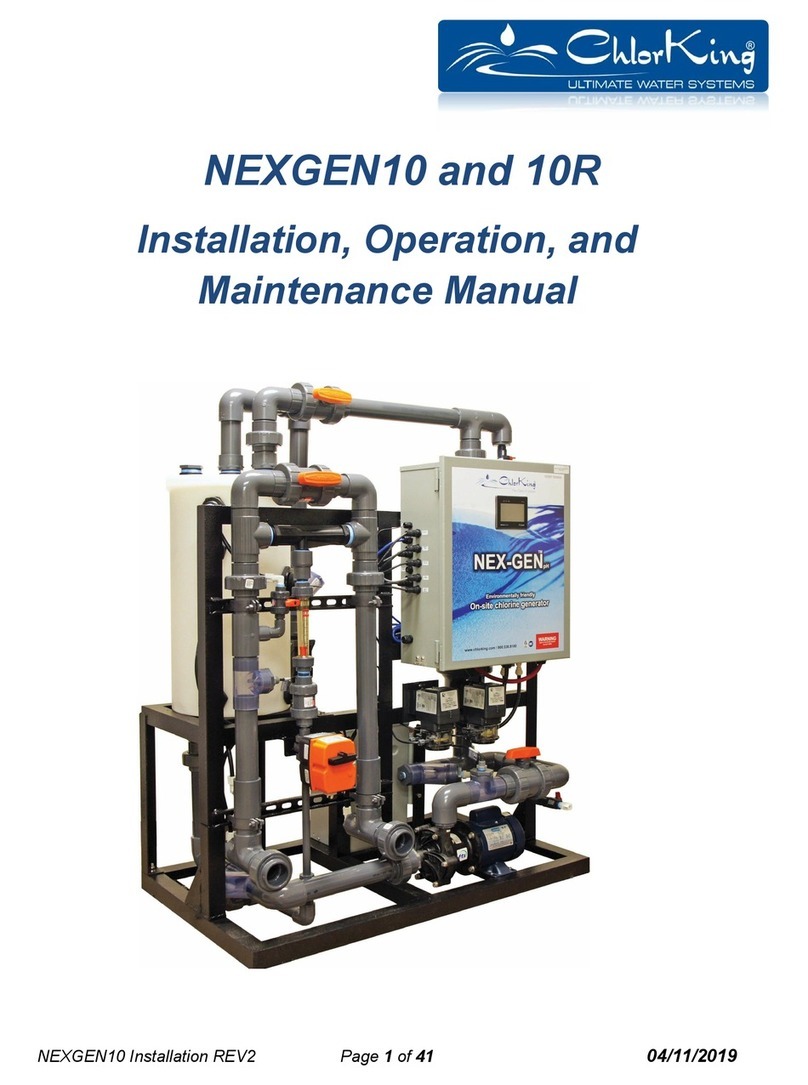
ChlorKing
ChlorKing NEXGEN10 Installation, operation and maintenance manual
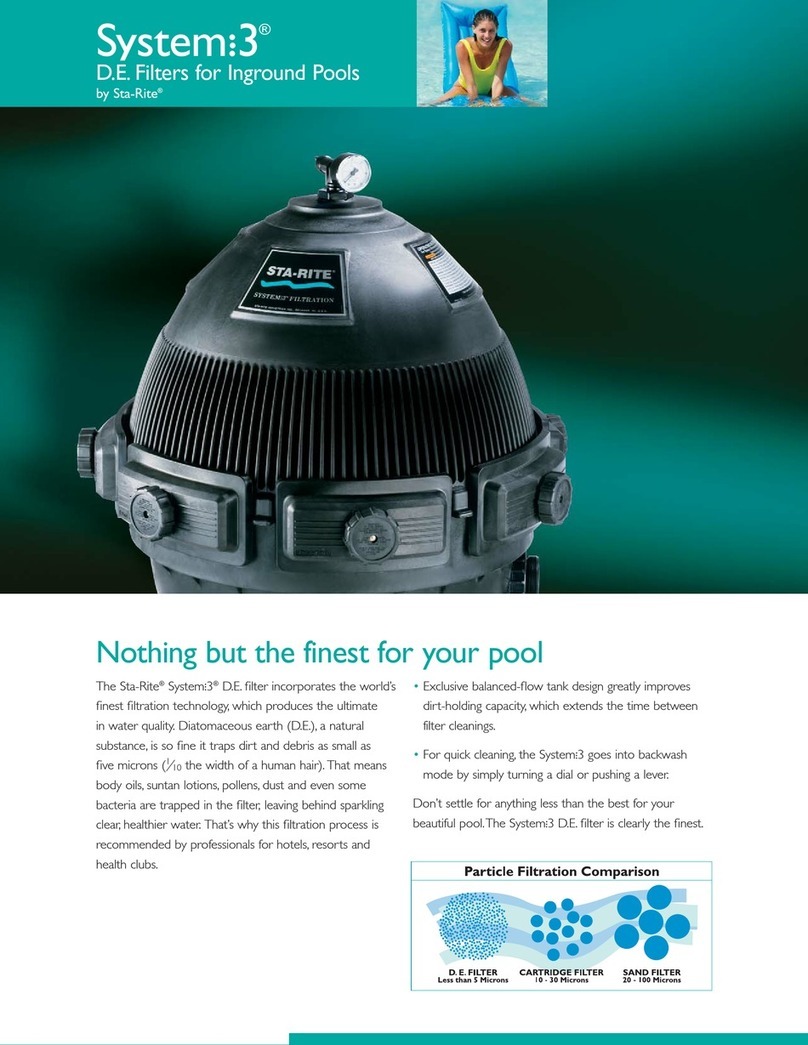
STA-RITE
STA-RITE VERTICAL GRID DE FILTERS S7D75 Specifications
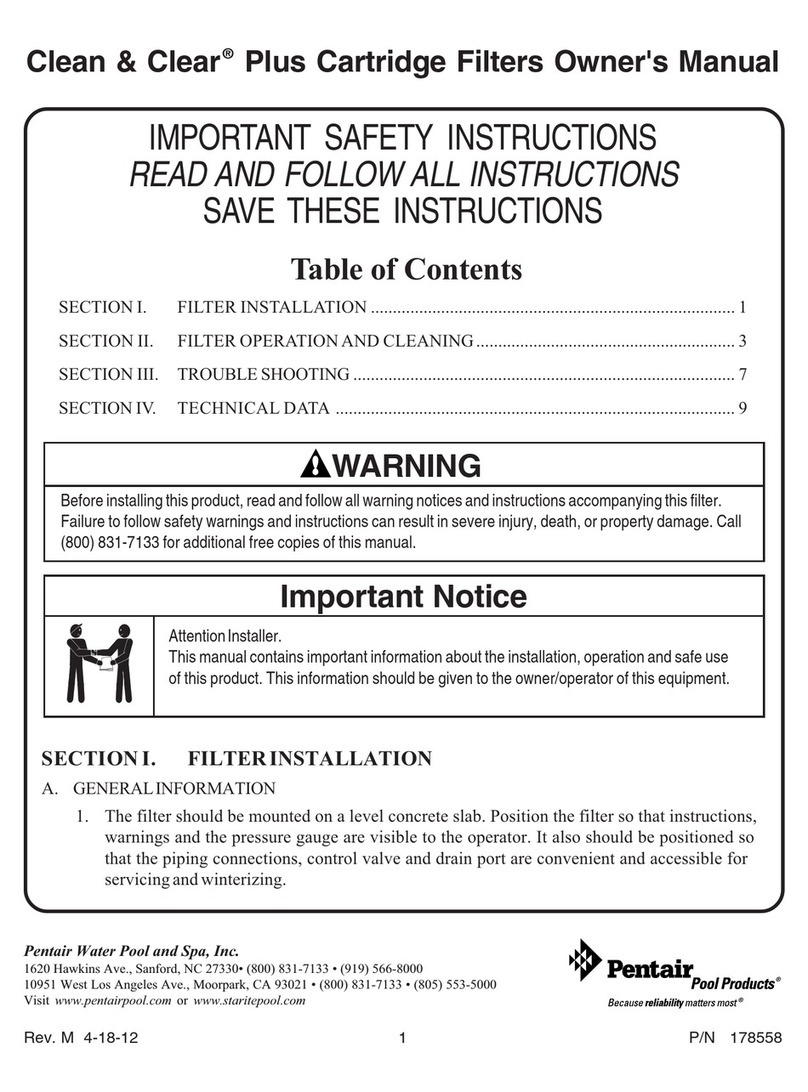
Pentair Pool Products
Pentair Pool Products Clean & Clear Plus 240 owner's manual
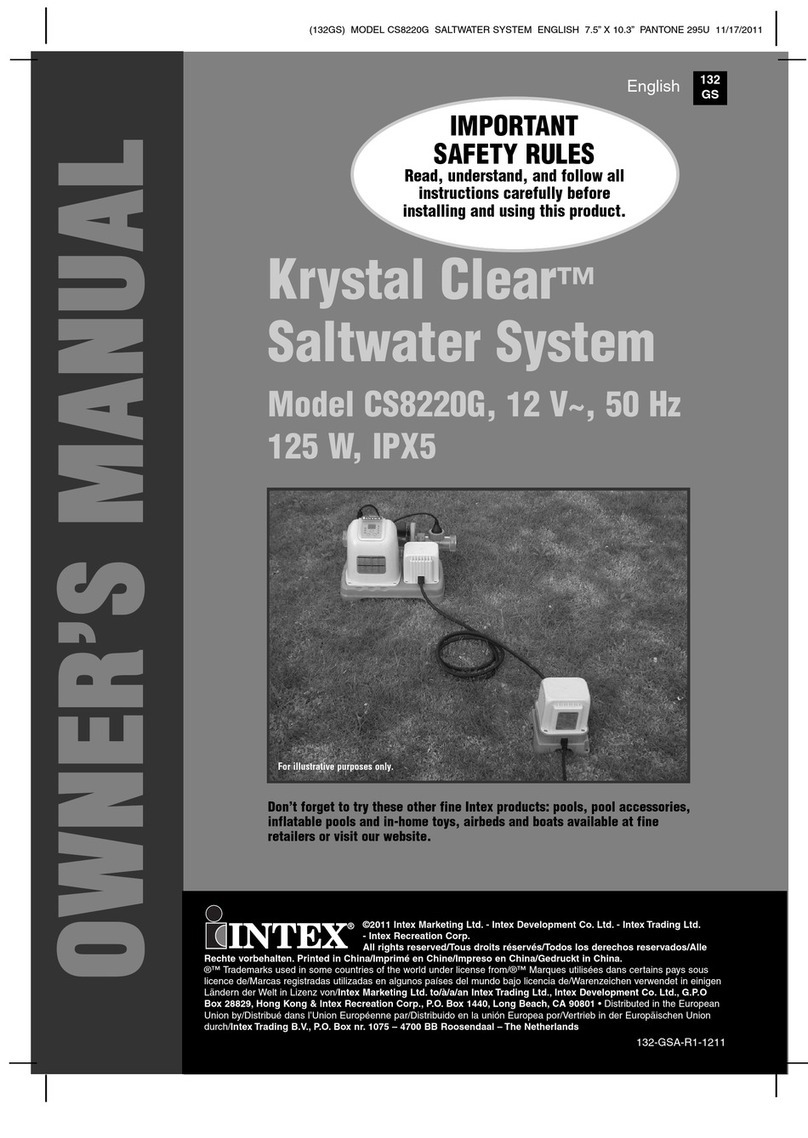
Intex
Intex Krystal Clear CS8220G owner's manual
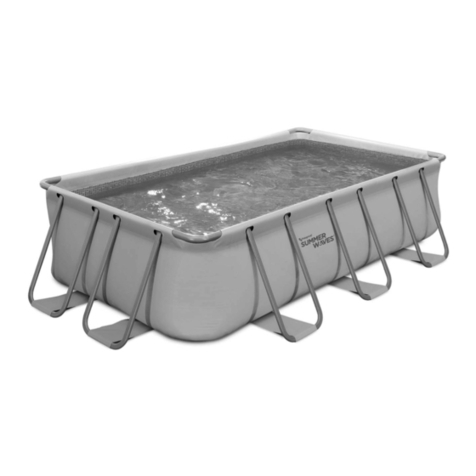
Polygroup
Polygroup Summer Waves Maintenance Kit owner's manual
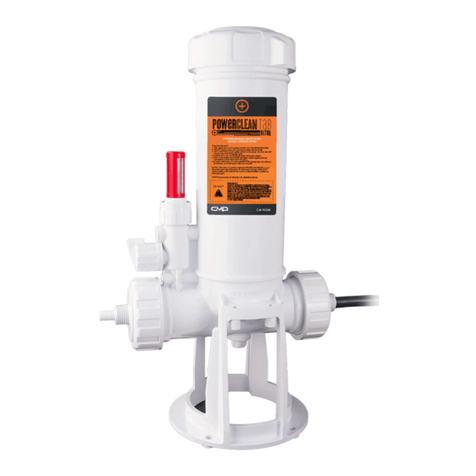
CMP
CMP POWERclean ULTRA Installation & operation
